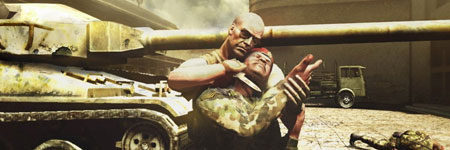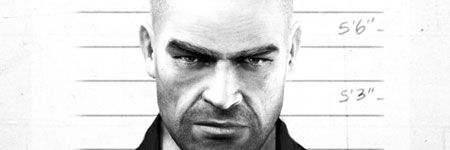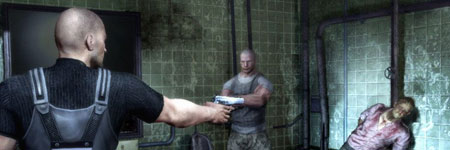Ever since the Tomb Raider series began the flop, I looked for other 3rd person single player games. Those I got really into were Max Payne, Grand Theft Auto and Splinter Cell. It was the first game I played that was all about stealth, hiding bodies, using cool gadgets, being a spy. The main character Sam Fisher was an expert covert operative and made jokes about his objectives. The game also had great graphics, interesting locations and a storyline that involved politics. I played all the Splinter Cell games at least twice, and not too long ago I beat them in sequence again. The third one, Chaos Theory, was definitely my favorite.
When Double Agent was announced, Ubisoft made clear that there will be some mayor changes to the gameplay, and in the story Sam Fisher would become a lot more “dark”. This made me think about all the wrong decisions Core Design made with Tomb Raider: Angel of Darkness, and I hoped the Splinter Cell team wouldn’t screw this one up.
So this game was actually the reason I upgraded my PC, because it requires a graphic card that supports Shader Model 3.0. Obviously, the graphics engine was improved once again. I read in some forum that many PC players have trouble getting Double Agent to work, even when their PC meets the system requirements of the game. I also had to play around with the graphic settings in order to get a stable gameplay experience. For the Shanghai level, I needed to turn off the detailed shader effects for it to even load.

If you have played a Splinter Cell game before, you will notice pretty soon that the HUD has been completely changed and deprived of some cool features. Say goodbye to the visibility/sound meter, the voice log and generally the menu-like appearance of choosing an interaction. This makes Double Agent seem less stealthy, and I don’t think the developers made a good choice here. Now you almost don’t use nightvision anymore, because you have to look for dark spots in your environment using “normal” vision. Otherwise, the first mission feels like a real Splinter Cell mission. Your character now has the ability to swim and dive underwater and there are some other cool new moves. The only obvious change made to the character Sam Fisher is that he is bald throughout most of the game. It makes him look old and a bit like the guy from Hitman, or the JBA characters. Was that really necessary? His haircut made him more agile, fresh looking.

Starting with the next mission, you become a double agent. The NSA gives you instructions to infiltrate an American terrorist cell by busting one of their members out of prison. Getting the organisation’s trust means doing missions for them as well, and you end up getting objectives from both factions. Here the new trust system comes in: Failing to accomplish an objective results in a loss of trust from the organization who gave you that order. Sometimes you have to choose one objective over another; these choices always involve the death of another person.
Of course, the orders you get from the so-called JBA don’t have to do much with stealth. The interesting ones come from the NSA, where you have to do some real spying, and it really feels like spying for the first time. You visit the JBA headquarters three times and have a limited time frame to find out as much as possible about the terrorist cell. This goes from collecting voice samples or finger prints to hacking a server or bugging an antenna. You do that by using NSA gadgets & entering restricted areas; getting caught results in a loss of trust. Those are actually my favorite missions. It also makes sense you can’t carry stuff like your night/thermal/whatever-vision device around or wear a suit that detects how visible you are. You just have to stay out of sight and avoid any contact with your “friends”. The stuff the JBA instruct you to do involve safe-cracking, mine assembly etc. in the same way Sam previously picked locks or hacked computer systems. I welcome the new on-screen puzzles, but in other reviews I saw editors complaining about these being out of place.

Another cool aspect of Double Agent is that the choices you make have an effect on how you will be able to complete a future mission. If you allow a key figure to be killed, you also eliminate the possibility to get help from this person later on. If you don’t complete all objectives, you might end up not having as much options as you could have. You can even choose to be completely loyal to the JBA while pretending to still be on the side of the NSA. This way you get to see different outcomes – different (bonus) content – of the story and so the game has a bigger replay value that its predecessors.
So what stays the same? Splinter Cell pushes the bar in terms of graphics again, the missions/locations are varied and the voices from returning characters sound familiar. The cinematics introduce you to the new mission and take you from place to place. Even with recent hardware, the game is a bit more buggy than what we are used to. A burdened Sam Fisher saves the world again: 7/10 points.
Leave a Reply